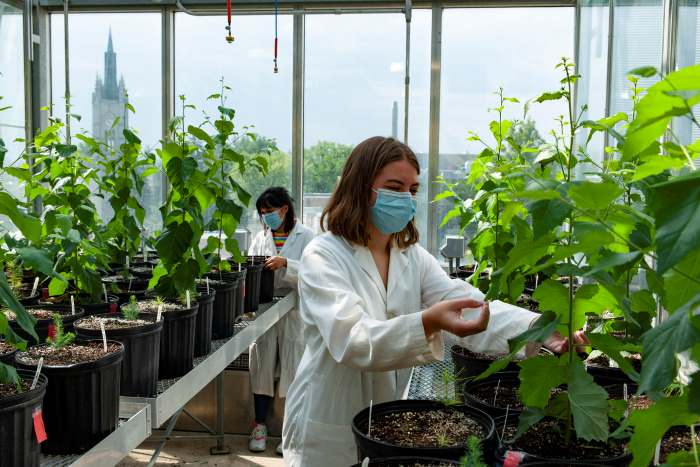Climate change poses significant challenges to plant life, threatening ecosystems worldwide. Researchers at Michigan State University’s Walker lab, part of the U.S. Department of Energy Plant Research Laboratory, are studying how trees adapt to shifting environments.
Their work focuses on paper birch trees and a crucial plant process known as photorespiration.

“If plant metabolism was a freeway system, photorespiration would be the second-highest trafficked road,” said Berkley Walker, associate professor in the Department of Plant Biology and at the PRL. “We are interested in understanding if the roads of this important pathway are large enough to handle all this traffic under present and future climate conditions.”
While photorespiration is essential, it reacts in opposing ways to climate variables. Rising atmospheric carbon dioxide (CO2) reduces photorespiration, while warming temperatures accelerate it. This creates a delicate balance that may affect plant growth and adaptation.
The study, published in Scientific Reports, investigated whether paper birch trees adjust the activity of photorespiratory enzymes under different environmental conditions. Paper birches, native to boreal forests, are well-suited to this research since these forests are among the ecosystems most vulnerable to climate change.
The team collaborated with researchers at the University of Western Ontario, where the paper birch trees were cultivated in the Biotron – a facility capable of simulating diverse climatic conditions. Six scenarios were designed to represent current, moderate, and extreme climate change conditions, based on projections from the Intergovernmental Panel on Climate Change (IPCC).

After four months, leaf clippings from the trees were analyzed to measure the activity of nine enzymes involved in photorespiration. The results revealed that the trees maintained consistent enzyme capacities across all conditions, regardless of climate stressors. Surprisingly, these enzyme levels exceeded the immediate needs of photorespiration, indicating a built-in buffer to handle environmental changes.
“This study explored whether plants fine-tuned their enzyme capacity based on demand or whether they keep a buffer, so they have extra capacity in reserve to handle unpredictable changes,” said Luke Gregory, former graduate student in the Walker lab and first author of the study.
“It was really interesting to find that there’s this safety factor that these plants have and it’s across all of these different environments that they’re able to have this buffer capacity,” Gregory said. “At first, we thought there was going to be this specific change to demand, but what we found is that across all of these different plants, they do maintain a buffer. They’re able to deal with these different changes whether under current, moderate or extreme conditions.”
These findings suggest that trees like the paper birch are equipped to manage some of the metabolic demands posed by a changing climate. While this resilience is encouraging, the researchers caution that photorespiration is just one aspect of how plants adapt to climate change.
“It’s important that we understand how plants are responding to current conditions and future conditions because we need them in our lives,” Gregory said. “Understanding if plants can acclimate or whether, over generations, they can adapt to these certain environments is important to understand because they provide a lot of fuel, food and fiber for us.”
This research offers a valuable piece of the puzzle, highlighting the potential of natural buffers in trees to help them endure a warming planet.
Journal Reference:
Gregory, L.M., Scott, K.F., Sharpe, L.A. et al. ‘Rubisco activity and activation state dictate photorespiratory plasticity in Betula papyrifera acclimated to future climate conditions’, Scientific Reports 14, 26340 (2024). DOI: 10.1038/s41598-024-77049-7
Article Source:
Press Release/Material by Michigan State University
Featured image: Researchers work in the Biotron, a research facility that can simulate nearly any climate on earth. The trees grown here were studied for this project. Credit: Mitchell Zimmer | Michigan State University




